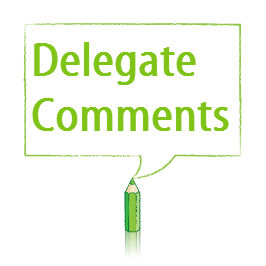These notes provide background information for those attending In Equilibrium training courses related to stress management. Please feel free to print them off so you can refer to them at your leisure.
What is stress?
The Health and Safety Executive (HSE) have defined stress as:
… the adverse reaction people have to excessive pressure or other types of demand placed on them.
This definition suggests that stress has an objective component; that there is a point for all of us when we will suffer from stress, and that point is reached when pressures or other types of demand become excessive. This clearly indicates then that excessive pressure represents a high risk.
Note that pressure itself is not necessarily bad. With the right amount of pressure we can feel challenged, stretched, and this is when we perform at our best. Some people refer to this as ‘positive’ stress. This may be because we often use the words ‘pressure’ and ‘stress’ interchangeably. However, as the definition above makes clear, we are using the word ‘stress’ to mean an adverse or negative reaction to too many pressures or demands.
A consultation exercise on stress at work carried out by the HSE found that the vast majority of professionals, employers, and trade unionists thought the use of the term ‘positive stress’ was confusing and unhelpful. This is why the HSE now only use ‘stress’ in the negative sense.
It is true to say that stress also has a subjective element. Our experience of stress may depend upon our perceptions about the situation we are in and whether we believe we can cope.
Logically then, it follows that, if we can reduce pressure and influence perceptions in the right way, the risk will be reduced.
What happens to us physically when we have this ‘reaction’?
This instantaneous, acute reaction we have has been called the ‘fight-flight response’. The fight-flight response is an automatic physiological reaction we all experience when we perceive that we are under threat. We unconsciously put our bodies into the optimum state to run or fight as effectively as possible.
Like it or not we still respond physiologically the same way as our hunter-gatherer ancestors. Picture our ancestor sitting by a fire when he sees the glowing eyes of a sabre-toothed tiger at the edge of the forest. Instantly his body goes into fight-flight mode and in a matter of seconds the following occurs:
- Digestion slows down. Blood gets routed to muscles and the brain. Today you may experience this as having a dry mouth and butterflies in your stomach
- Breathing speeds up. This is to prepare for action. Try catching your breath after getting scared.
- Heart races and blood pressure soars. Blood pressure increases to get blood to all parts of the body to prepare to fight or flee. Recall your own heart pounding in frightening situations.
- Perspiration cools the body. Sweating when under stress allows the body to burn more energy. When facing that stressful meeting, do you think about using more deodorant.
- Muscles tense. Your ancestor was ready to run from danger. Today you may have a stiff neck or aching back after a hard day.
- Blood clots faster. In case of injury you release chemicals to make blood clot quicker.
- Sugar and fats pour into the blood. This provides the energy needed to slay an attacker or run for your life. Can you recall having surprising strength and endurance during an emergency?
read more………….. click here to download the full version of Stress-background-notes
Categories
Recent articles on our blog....
Workplace wellbeing resources – some helpful recent additions
Our latest collection of external resources to help workplace wellbeing includes guidance and recommendations relating to a range of topics – autism employment, ensuring EDI is for everyone, information sharing in mental health emergencies at work, menopause in the workplace and women at work.
Read More →Why we should focus on minimising employee illbeing to aid workplace wellbeing
This post begins with some research which concludes that efforts to improve wellbeing at work are directed too narrowly. It then goes on to highlight some courses that can help employers looking to minimise employee illbeing in the workplace. They present opportunities to explore strategies that can enhance a culture of psychological safety and trust.
Read More →Moving more at work for our mental health
In line with the theme for this year’s Mental Health Awareness Week, we offer some simple suggestions for building movement into our working day.
Read More →Testimonials

Our purpose is to provide training and consultancy services to enhance resilience, health and wellbeing in the workplace.

Differentiation is one of the most strategic and tactical activities in which companies most constantly engage

It's natural to have questions about training and how it fits with your organisation. Our FAQs can help you find out more.

View case studies for some of the in-house training courses we have delivered to different types of organisations across the UK.





